Human Witness Theory
Our system’s deep dependence on the human witness shapes a number of fundamental theories of trial persuasion. To take advantage of the key features of the human witness, we must first identify and understand them. In this article we analyze those basic features.
Part I: The human witness.
The human intermediary.
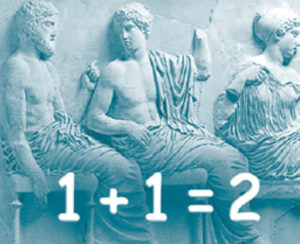 Immersed in our system of dispute resolution, we often fail to recognize (and take advantage of) its key features.
Immersed in our system of dispute resolution, we often fail to recognize (and take advantage of) its key features.
Consider the dispute resolution system developed by another rational culture, ancient Greece. Greek persuasion “handbooks concentrated on what was called ‘argument from probability’ to the neglect of using direct evidence. Greek juries distrusted direct evidence such as witnesses or documents because they thought these might be bribed or faked. They put more confidence in what those involved would have been likely to do in terms of the circumstances or their character.” Common sense and probabilities trumped the human witness.
By contrast, at center stage in our dispute resolution system is the live witness. We consider the best form of proof to be an eyewitness to the key event. We revere “direct evidence” and speak disparagingly of proof that is “just circumstantial evidence.” In our approach, nearly all evidence relies upon a human intermediary – the evidence passes through (is mediated by) a human mind before it reaches the trier of fact. Not only are all witnesses human, all documents are created by humans.
Only a few forms of evidence give rise to direct inferences with no (or minimal) potential for distortion by a human intermediary. Jurors can view photographs depicting relevant facts (e.g. the extent of injuries on the face of a victim of spousal abuse) and draw conclusions that are unaffected by a human intermediary. Sometimes the jury can draw conclusions directly from a piece of real evidence (e.g. the rock that was used to strike the blow), or from physical attributes of a witness (e.g., the size and strength of a body-builder who claims to be the victim of an assault by a much smaller person), or from a direct view of the scene of a crime or accident. But such examples comprise a small fraction of the proof in most cases. As a result, nearly all evidence is subject to attack or support based on the presence or absence of factors that create errors in human evidence.
How do we make any practical use of this insight? The presence of a human intermediary for evidence means that the evidence is subject to human error. And the potential for such error provides a basis for diminishing or magnifying the probative value of almost all evidence. Some spheres of trial practice are very familiar with a few of these tactics. For example, criminal lawyers frequently examine witnesses on the accuracy of their identification of the accused. But many potential arguments (and, therefore, lines of cross or direct) are overlooked.
Input, storage, and output.
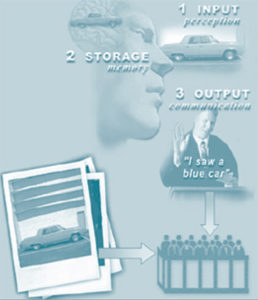 To begin to identify these overlooked arguments we can contrast proof through a live eye-witness with proof through photograph, which is the archetype of proof without an intermediary.
To begin to identify these overlooked arguments we can contrast proof through a live eye-witness with proof through photograph, which is the archetype of proof without an intermediary.
When a human intermediary is the witness for a certain piece of information, that information must be:
- (i) detected out-of-court by the witness’s five senses,
- (ii) stored in human memory, and then
- (iii) transmitted out (usually in words) through testimony or demonstration on paper (or other media).
When a jury is asked to draw inferences directly from a photograph, there is no human intermediary and none of those steps occur.
From this we glean that errors arise in three different settings: during input (perception), storage (memory), and output (communication).
In the following Part, we identify the sources of errors in perception, memory, and communication. By explicitly recognizing and cataloguing these sources of error, we have both a useful tool and a starting point for deeper analysis. We can use it as a checklist of potential lines of cross and direct examination to undermine or support testimony. And we can take individual items on this list and delve deeper to understand patterns of examination that make the best use of each potential error.
Part II: Sources of human witness error.
Perception: input error
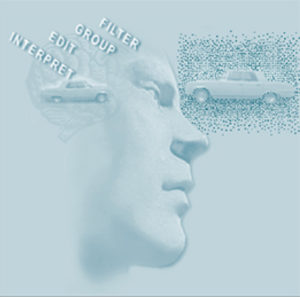 One type of input error occurs because of physical impediments to perception that prevent the witness from accurately or completely perceiving the event. For example: a witness did not see the incident well because the parking lot was too dark.
One type of input error occurs because of physical impediments to perception that prevent the witness from accurately or completely perceiving the event. For example: a witness did not see the incident well because the parking lot was too dark.
A second (and more subtle and more important) type of input error is caused by misinterpretation. Humans do not simply record the light and sound images directly to memory. Instead, we:
- (a) interpret the sensory images, and then
- (b) remember the interpretations.
It is true that we remember a passing blue car because we perceive a passing blue car. But we perceive a passing blue car only because we interpret the movement of the blue light and the accompanying sounds as a passing car.
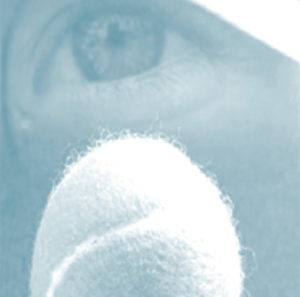 We edit, filter, group, and interpret our sensory input from the moment of initial perception. As a result, the perceptions themselves are “distorted” interpretations before they ever reach memory.
We edit, filter, group, and interpret our sensory input from the moment of initial perception. As a result, the perceptions themselves are “distorted” interpretations before they ever reach memory.
In the following two sections, we separately analyze the sources of interpretation errors during input and then physical perceptual errors.
Catalogue of perceptual errors caused by interpretation
The following is a catalogue of factors that diminish or magnify interpretation errors during perceptual input.
Well-developed perceptual judgment,through experience or training
People can develop an enhanced ability to perceive subtleties. For example, a professional line judge in tennis may not have better physical vision than the average tennis fan but, because of experience and training, can actually “see” more acutely whether the pale green tennis ball traveling at 120 m.p.h. hits the three-inch wide chalk line.
Competing perceptions
Competing perceptions can impede our efforts to perceive the relevant event. This competition can take the form of a large number of competing inputs or by inputs with greater stimulus (brighter, louder, bigger) than the relevant event. This is the “Where’s Waldo?” effect.
Bias or interest
Our desire for a certain outcome colors our immediate interpretation of what we see. Did the football receiver place a foot out of bounds before catching the ball? A die-hard fan is more likely to get that call wrong than a neutral referee.
Length of time exposure to event
If someone perceives an event longer, there is greater likelihood that the person will accurately observe the event. This limitation on input is also related to sources of memory error (discussed below), including the ability and motivation to immediately replay the event in the mind or to double-check the perception.
Intentional mental focus
An observer can choose to place mental focus principally on interpreting visual or aural cues, or instead on some other phenomenon (such as recalling last weekend’s trip to the lake or thinking about a problem to be solved at work).
A mind focused at the moment of perception on interpreting the perception will perceive more and perceive it more accurately.
Motivation to pay attention
A witness may have a particular motive to pay attention to or avoid perceptions. For example, the bank patron may pay particular attention to physical features of the bank robber during the robbery. By contrast, the squeamish person may avoid looking at the gory accident scene.
Alternative or multiple angles or sources
The sports world shows us the importance of the right camera angle. If we perceive an event or phenomenon from one angle, we are more likely to misinterpret it than if we view if from more than one. For example, if we see a body at a crime scene from a single angle we cannot interpret it as well as we can were we to walk all around the scene.
Drugs, alcohol, or other related impediments to interpretation
Drugs and alcohol can, obviously, distort the interpretation of perceptions.
Catalogue of perceptual errors caused by physical effects.
The following is a catalogue of factors that diminish or magnify physical errors during visual input. We follow this with a similar identification of aural perception errors:
- a. Lighting – Too little or too much.
- b. Distance – Too far away or too near.
- c. Vision – Near-sighted or far-sighted
- d. Color-blindness.
- e. External obstructions.
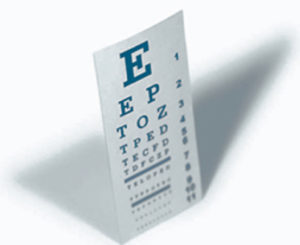 Any object placed in the visual field between the eye and the event can partially obstruct visual input. Glasses, sun-glasses, or goggles can block, distort, or diminish visual perception. Clothing, such as a hat, helmet, or high collar can block or limit views. Vision can be blocked or limited by other people who are with or near the witness or by other obstacles such as buildings or trees. Vision can also be impeded by “other-sidedness.”
Any object placed in the visual field between the eye and the event can partially obstruct visual input. Glasses, sun-glasses, or goggles can block, distort, or diminish visual perception. Clothing, such as a hat, helmet, or high collar can block or limit views. Vision can be blocked or limited by other people who are with or near the witness or by other obstacles such as buildings or trees. Vision can also be impeded by “other-sidedness.”
By that we mean that the relevant fact was primarily visible from the other side of the object or person that is the subject of the observation (e.g., a gun in the right hand of a person whose left side was exposed).
The following is a similar catalogue of sources of error for aural perceptions:
- a. Loudness.
- b. Frequency – higher pitched sounds do not travel as well as lower pitched sounds.
- c. Distance from the sound
- d. Obstructions.
- e. Echoes.
- f. Wind. Because sound is ordinarily transmitted through air, the movement of the transmitting medium (i.e. wind) can distort (muffle or amplify) sound.
A continuation of this article that explores errors in storage and output, is forthcoming.